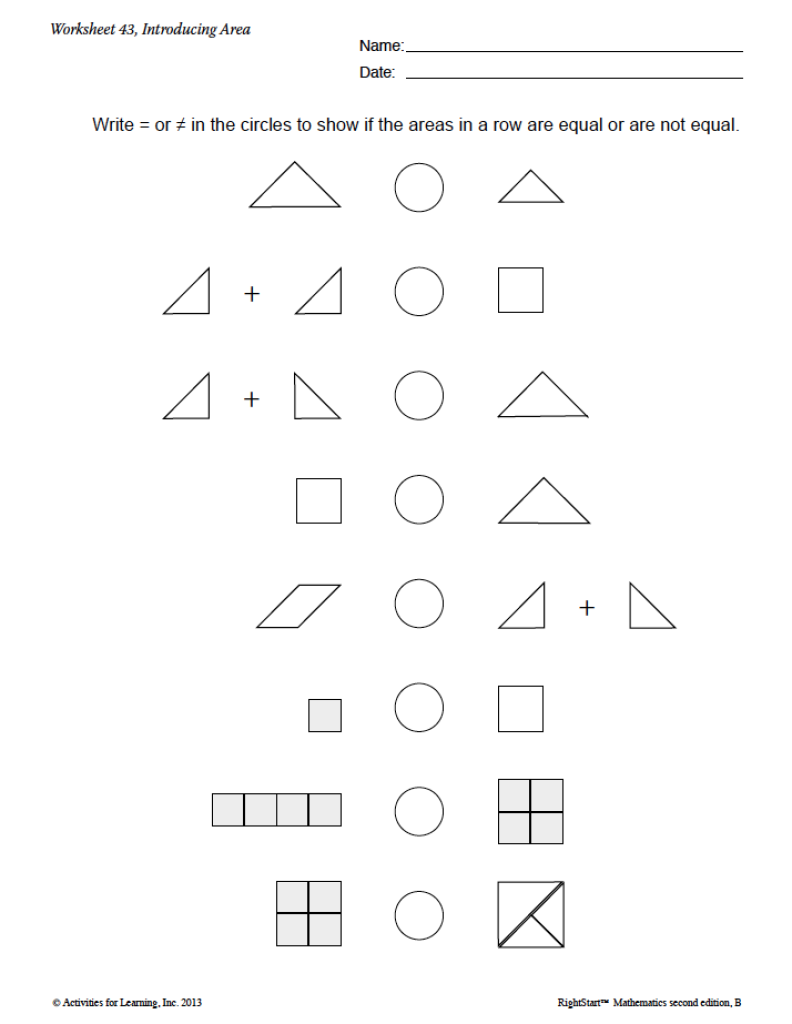As many of you know, when we find errors in our manuals, we make the corrections immediately (because we print our books in house as needed), then post the information online here under corrections at the bottom of that page.
Recently, someone brought an error to us. This is from RightStart™ Mathematics, second edition, Level B, Worksheet 43 from Lesson 100. As you can see, the child is to write = or ≠ in the circles to show if the areas in the row are equal or not equal.
I looked it over and here’s how the discussion went. Spoiler alert: there was not an error.
First problem is pretty easy. Big triangle. Little triangle. Not equal. Everyone agree? Good.
Look at the second problem. For ease of description here, we’re going to call these half square triangles, or HSTs. HST plus HST equals a square.
![]()
Drawing a diagonal line in the square makes it become obvious that the two HSTs are the same as the square, therefore the same areas.

Problem 3. Now we have two HSTs, albeit one reflected. Are they the same as the big triangle?
![]()
HST plus reflected HST equals the larger triangle. Draw a line in the larger triangle and it becomes very easy to see the answer. Yup! They’re the same.
![]()
Now the fourth problem. I’ll let you know right off that this is the one that stumped quite a number of us – me included. Is the square the same as the triangle? Well, just looking at it, we all said, “Of course not! Don’t be silly.”
![]()
I was ready to make the change in the teacher’s manual and thought I’d run it by Dr. Cotter, just to be sure. Image my surprise when she said, “Of course it’s the same.” Whaaaa?
Well, let’s draw our lines and think this through. If the square is two HSTs and the triangle is two HSTs, wouldn’t the square be the same as the triangle? That it would! There was no error.

So why are we having the children this young working with area? Shouldn’t they be focusing on their numbers and their addition and subtraction facts?
Arithmetic is one of many branches of mathematics. Like 200 or so branches of mathematics. Calculus is a branch of math that is devoted to working with area. Allowing the child to experience area is important. Just tell your friends that your child is doing pre-calculus!



Working with the tangram set should make these problems easier to understand.
You are absolutely right, Kelvin. The lesson has the child work with tangrams, however the worksheet doesn’t explicitly tell the child (or parent) to use the tangrams. I didn’t and you can see the chaos that occurred! If the tangrams are used, this is a slam-dunk! Thanks for pointing that out.
Ah…so we almost skipped the Tangram lessons with my daughter today. Good to know that they will come in handy later on down the road!